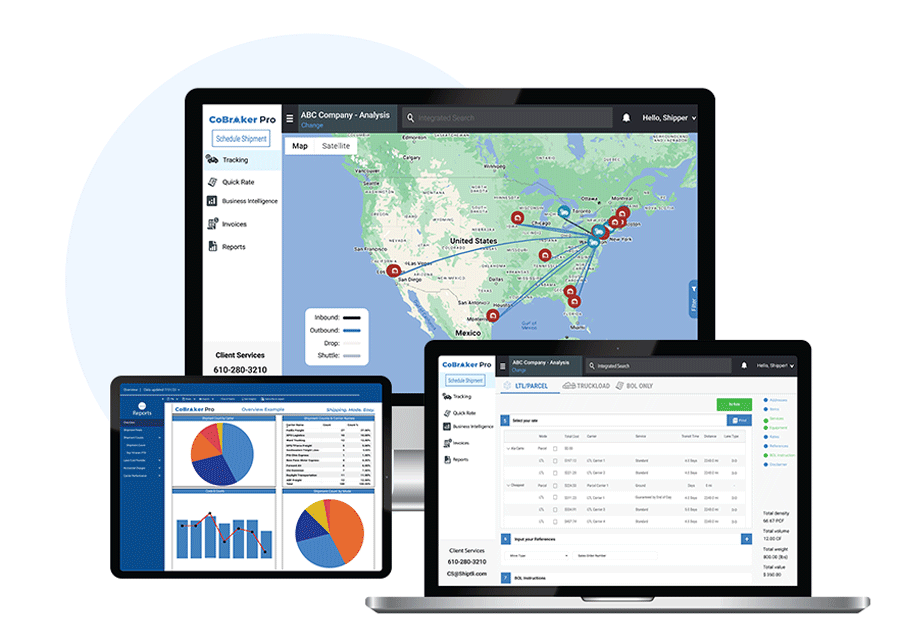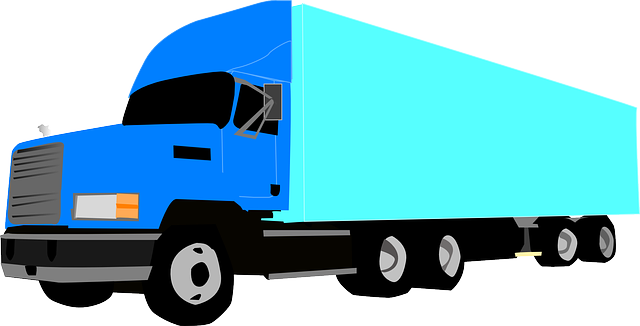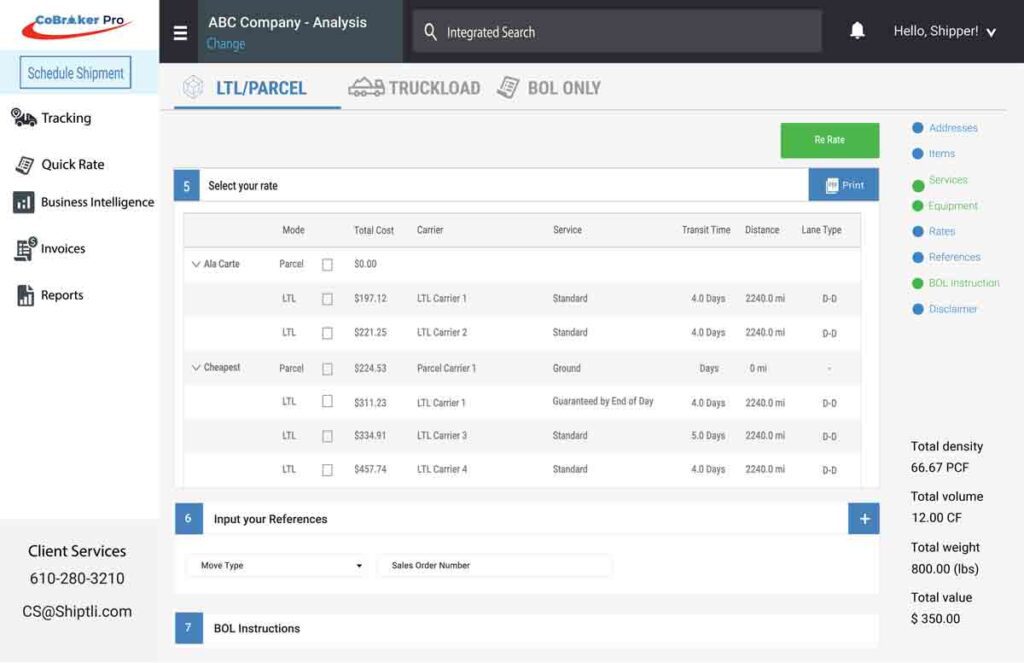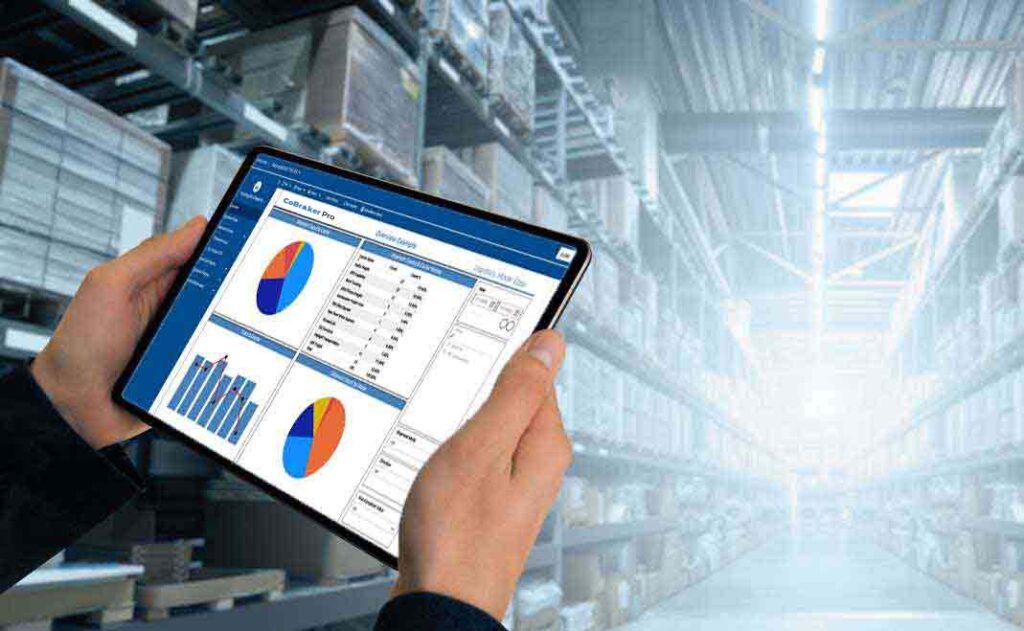Freight quotes shouldn’t be guesswork. No more emailing spreadsheets or relying on outdated routing guides. ViewPoint puts everything at your fingertips in seconds.

Historical Freight Invoice Data: A Hidden Asset
Most TMS platforms ignore your past invoices. We don’t. ViewPoint TMS allows you to download and store historical freight invoices, giving you full visibility into past costs and performance.
When a new carrier submits a rate during an RFP, the TMS system compares it directly against your historical shipments. That means you don’t just get a quote—you get context. You instantly see whether the new proposal is competitive or if the GRI pushes the carrier out of the market. Accessorial charges stand out clearly, so you know if they’re fair or inflated. And when shipping rates seem off, you’ll know whether you’re leaving money on the table.
This is especially powerful when onboarding new carriers. You can show them what your cost profile looks like and challenge them to beat it. No more blind trust. Just data-backed negotiation.

Mode Optimization: LTL vs Volume vs Parcel
ViewPoint TMS doesn’t just return shipping quotes. It shows you the appropriate mode of transportation1 based on your actual shipment characteristics.
Have a shipment that straddles the line between parcel and LTL? ViewPoint will show both freight quotes. Not sure if your LTL freight would qualify for volume pricing? The system shows you that too. You can compare cost, transit time, and accessorials across multiple modes instantly.
This kind of side-by-side quoting prevents overspending and helps you find the right fit every time. It also empowers your team to stop relying on gut instinct and start quoting based on real-time intelligence.
With mode optimization built in, ViewPoint TMS transforms every shipment into a cost-saving opportunity.

Static Routing Guides Are Over
Decades ago, routing guides2 used to be printed and posted on office walls. That era is long gone. ViewPoint TMS uses dynamic routing based on real-time pricing and performance data.
Through integrations with APIs and EDI,3 ViewPoint pulls updated rates, service levels, and LCP (least cost provider) data every time you need freight quotes. That means the system always knows your best option—not just by carrier, but by hundredweight, accessorial, and service level.
Contracts today are complex and individuated based off your shipment profile. The hundred weight, accessorial makeup and freight classification can change who the least cost motor carrier is on the same exact lane. One carrier might offer a better base rate but add fees for liftgates or limited access. Another might give you great density-based discounts but penalize oversize freight. These variations mean that the “cheapest” option isn’t always obvious—unless your TMS does the math.
And that’s what ViewPoint does. It evaluates each scenario using your actual contract terms – dynamically. The result? Smarter decisions, optimized routing, and lower freight spend. The system saves this data and uses it in the freight invoice audit program to ensure accountability and prevent surprise billing errors—assuming the information was entered correctly during BOL creation.
Why Contract Variability Demands Optimization
No two carrier contracts are the same. Your carriers likely don’t price shipments the same way. One may offer better hundredweight4 discounts, while another might charge separately for accessorials. FAK classifications,5 fuel surcharges, and minimum charges often vary significantly between providers. Managing that complexity manually quickly becomes overwhelming. Manual billing also results in higher processing and less scalability. If your rates vary even slightly across providers, it’s imperative to use a TMS that can process those differences and present clear options.
With ViewPoint, you upload your carrier contracts once. From there, the platform automates routing decisions based on your real rates, LCP calculations, and freight class logic. The system adjusts as your contracts change—no more guesswork, no more outdated tables.
This level of precision is what today’s supply chains demand. And it’s what CoBrokerPro delivers.

FAQ: Advanced Freight Quoting
How does ViewPoint compare new rates to past shipments?
We store historical freight invoice data and use it to benchmark all new proposals, helping you evaluate carrier competitiveness.
Can I see parcel vs LTL quotes side by side?
Yes. ViewPoint shows cost, transit, and service comparisons between parcel, LTL, and volume rates in one screen.
How often does ViewPoint update pricing?
ViewPoint pulls rates in real-time through carrier API/EDI connections, ensuring you always have the latest pricing. You can upload your own contracts and have us source and load custom contracts on your behalf.
What if my contracts have different terms across carriers?
No problem. ViewPoint TMS factors in every rate detail—including hundredweight brackets, fuel surcharges, and accessorial fees—for an apples-to-apples comparison.
Do I still need a routing guide?
Not in the traditional sense. ViewPoint uses dynamic routing logic that updates based on your carrier contracts and performance data. Equip key vendors with a vendor routing portal that optimizes carrier and mode selection. Book outbound freight directly through ViewPoint TMS or by integrating the rating engine into your ERP system.6
Footnotes:
- Parcel, LTL (Less Than Truckload), volume, and FTL (Full Truckload) represent different shipping options based on shipment size and weight, with parcel handling small packages, LTL consolidating multiple smaller shipments, volume covering larger-than-LTL loads, and FTL dedicating an entire truck to a single shipment. ↩︎
- Routing guides are documents that specify preferred carriers and shipping rules by lane. This method of transportation used to be popular before the advent of transportation technology. Now in modern times, shipments are rated using multiple parameters—hundredweight, linear feet, accessorial charges, and freight class—making manual routing guide management impractical and highlighting the need for a TMS to handle this complexity accurately. ↩︎
- API (Application Programming Interface) and EDI (Electronic Data Interchange) integrations enable automated communication between your TMS and carrier systems, allowing real-time exchange of shipment data, POD archiving, tracking updates, and rate information. ↩︎
- Hundredweight (CWT) is a freight pricing unit equal to 100 pounds, commonly used to calculate shipping rates based on the weight of the shipment. ↩︎
- FAK (Freight All Kinds) classification groups different products under a single freight class to simplify pricing. TLI can negotiate FAK agreements through carrier RFPs when your shipper profile qualifies, helping you secure more competitive rates. ↩︎
- ViewPoint TMS integrates with your ERP system to streamline freight management, automate BOL creation and improve data accuracy. ↩︎
